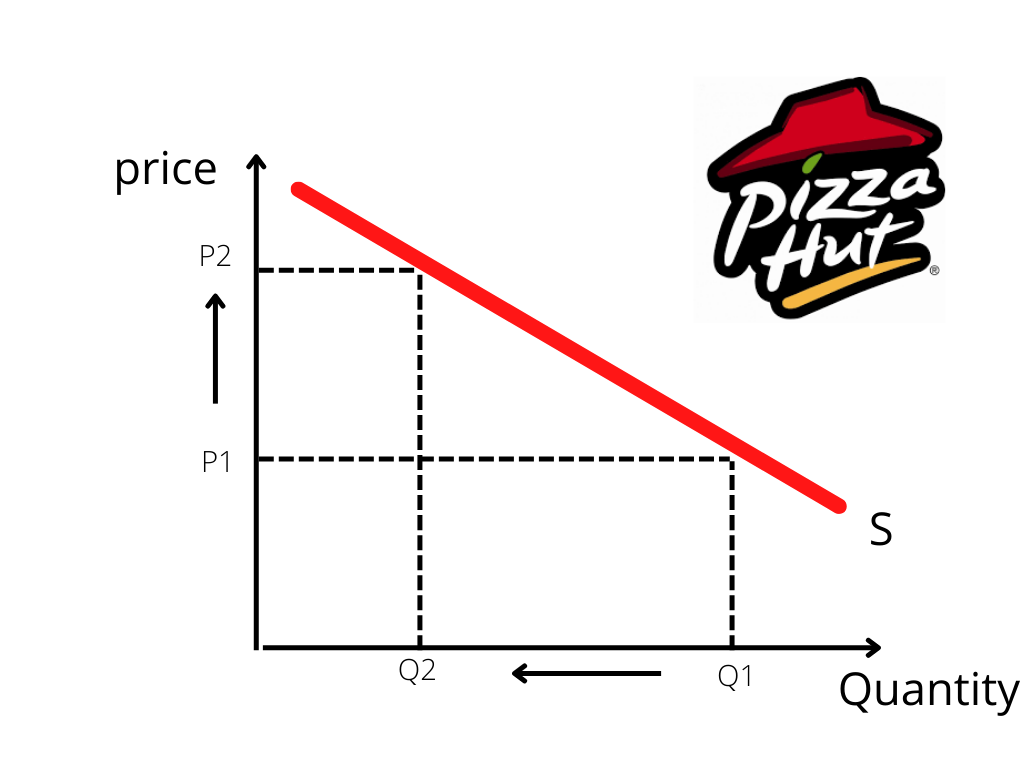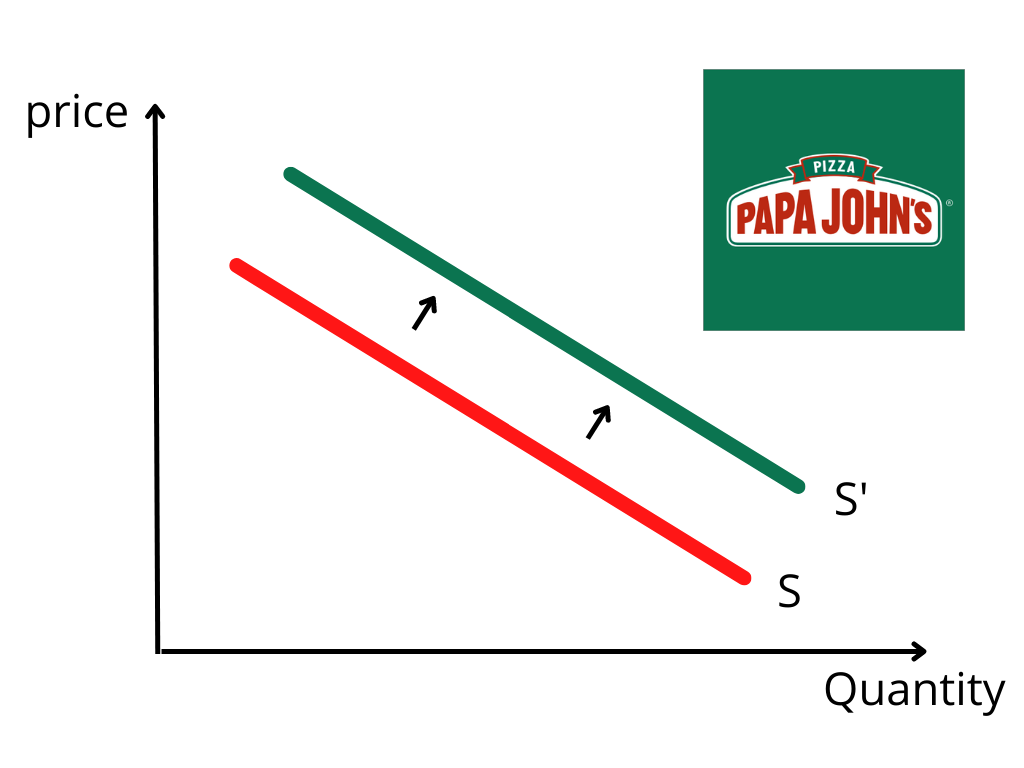Substitute Products
It is defined as a good or service that replaces another.
What are Substitute Products?
A substitute good can also be a service rather than just a tangible item. It is defined as a good or service that replaces another.
More customers may choose to go to Burger King or KFC when the price of McDonald's rises.
In another way, a substitute good is a similar item that may be used instead of another. It is similar enough to it to achieve the same purpose.
For instance, since the iPhone and the Galaxy Note function as mobile phones, they both serve as alternatives. Consequently, they provide two options if you want a phone.
- A substitute good is utilized in place of another good or service.
- Positive cross-price elasticity describes the relationship between the price of one substitute good and the demand for the other substitute good.
- Because a competitor may quickly replace substitute goods, they are subject to intense competition.
Replacement products guarantee a competitive environment. This is crucial because it keeps costs down and quality high. Simply put, the demand for a substitute good will rise as the price of the original good rises.
Therefore, when McDonald's raises the price of their Big Mac from $9 to $15, consumers will receive a $9 Burger King burger in its place. At least two products the same consumers might use for the same purpose are considered replacement goods or substitutes.
Direct Substitute Goods
The identical products are offered by one frozen yogurt business and another one close by. They square off against one another. They directly oppose one another.
Direct substitution products are comparable and have a lot in common. For instance, Coca-Cola and Pepsi are exact equivalents in the beverage business. These are sometimes called "near substitutes" or "within-category substitutes."
We refer to the strong cross-elasticity of demand for direct replacements. This is the situation where two products are simply exchangeable. There might be an own-brand sack of flour and one that is branded, for instance.
NOTE
Any adjustments to the variables, especially the price, may significantly impact the customers' preferences.
The demand for direct substitutes is highly cross-elastic. For instance, Pepsi's sales increase by almost 10% when the price of Coca-Cola rises, and its sales decrease by 10%.
In other words, they might be regarded as direct substitute commodities if there is a high correlation between them.
Consumers can find direct substitute products in various markets, including food and beverage, technology, and home appliances. Additionally, these products are prevalent in business since several competitors make items with comparable attributes.
Indirect Substitute Goods
Closely related items that target the same market and meet comparable demands are in indirect competition.
For instance, the products sold in an ice cream shop and a frozen yogurt business differ. However, they both aim to satisfy the need for something cool and sweet in hungry people. As a result, they are indirectly competing. They are each other's veiled rivals.
Products that are indirect substitutes may come from seemingly unrelated sectors or categories. For instance, if the cost of bowling increases, more people may opt to purchase video games.
Although separate products from different industries, some customers may easily interchange the two.
These have a low cross-elasticity of demand, as we like to say. For instance, a shopper might enter the shop expecting to buy a doughnut but discover none available. So they might instead present you with a banana.
Two things are totally unconnected to one another but can be swapped out. Due to their rarity, indirect alternatives have a low cross-elasticity of demand. For example, video game sales might only rise by 1% in response to a 10% drop in sales and an increase in bowling prices.
Therefore, there is a poor connection between the two. But marketers need to take this into account.
Factors Affecting Substitute Goods
When variables change, substitute items satisfy customer desires. There are many variables at work, including cost, level of quality, and location. In the event of one of these changes, alternative goods are used.
The neighborhood baker may sell you a nice, fresh doughnut every day. But eventually, these doughnuts start to lose quality. It has little flavor and is dry. Consider all the alternatives you could use in its place.
Other cakes, waffles, or other foods might be present. Anything else can be considered a substitute if it is bought in place of the doughnut. For several reasons, consumers pick replacements. Let's examine a few of them below:
- Price is the most frequent factor leading buyers to substitute products. If a pint of beer costs $10 in a restaurant and a Coke costs $3, the client must think the beer is worth $7 more. Every person assigns a different value to every product.
- Supply and quantity frequently impact consumers' choices to buy alternative goods. For instance, the last of the iced-ring doughnuts might have been purchased at the nearby supermarket. Customers might search for alternatives instead.
- The desire for alternatives to the product might be impacted by its quality. Known products can be compared to one another to see if one tastes better, lasts longer, or is more comfortable.
- There could be two grocery stores. There are two, one on the way home from work and the other another 15 minutes away. The customer benefits from the convenience of the location. This is another aspect that the customer will think about while choosing a product.
- Over time, consumer tastes might shift. A trend or holiday item might only be offered during a particular year's season. Mince pies, for instance, are exclusively offered during the holiday season.
- Income increases can influence consumer behavior on a local level. For example, customers can purchase a Starbucks coffee to go rather than making their own.
- Alternatively, as their incomes rise, they might start purchasing more lean cuts of steak. When comparing replacement goods, the price of a good becomes less critical as earnings rise.
Competitive monopoly and substitute products
Some perfectly interchangeable products but labeled and promoted differently can be found in several markets for frequently bought commodities. This circumstance is referred to as monopolistic competition.

Consider that the cost of a pizza hut can rise from P1 to P2. As a result, people would eat less pizza hut, as seen by a decrease in volume from Q1 to Q2.
The demand curve for Papa Johns, the substitute goods shifts out at all price levels, from S to S', increasing consumption of the substitute.

Take the contrast between a medication's name-brand and generic versions, for instance. The two things are substitutes since they may be identical and share the same **active component. Their packaging, nevertheless, is very different.
The component of a molecule or substance that creates its biological or chemical impact is known as the active ingredient. In other words, it addresses the patient's ailment or condition and either relieves it or cures it.
The only real distinction between the two treatments is the cost because the two products are nearly identical. In other words, the two sellers each rely heavily on price and branding to generate sales.
The Importance of Substitutes for Businesses
The company must analyze its competitors (competitive analysis) as part of its market research.
To do this, it must first identify them. If it is quite easy to identify the direct competitors (who propose a quasi-similar offer), it is much less for the indirect competitors (who can propose substitute products).
By identifying substitute products, the company broadens the scope of its market. It becomes larger than the one it thinks of. At the same time, it also considers the "hidden" - in the sense of "non-apparent" - threats in its market.
For local shops, the threat of a substitute product is all the more serious if it is offered by a competitor in the same catchment area and for a similar price. For online commerce (e-commerce), the risk is even greater. And it can appear even more quickly.
Substitute products can also be a great source of opportunity for a company that wants to penetrate a market. Because demand is volatile, significant profits can be made in markets with few or no substitutes.
How to Identify Substitutes
There are various methods for identifying a company's substitutes. However, they are quite difficult to implement in practice. The best known is the price elasticity method.
The more the price of a good increases, the more demand will shift toward the consumption of another product. This is then a substitute product.
That said, substitute products are generally the result of intensive questioning. Therefore, a business must constantly reflect on them and open its sense of analysis as widely as possible. To do this, it must identify the characteristics of its offer that appeal most to its customers.
Based on this observation, a business must imagine what could compete with the strong points of its offer: an alternative technology, a lower price, etc. Only then can he identify the products that could overshadow his offer.
The best way for a business to protect itself from substitute products is to act on the supply side. Various levers allow a company to protect itself: price, transfer costs, quality, brand, availability, and innovation.
The product's price is, first of all, a critical factor. If it is low and the price of the substitute product is higher, the consumer is likely to be reluctant to switch.
Switching costs are also important. These are the costs that the firm's customers will incur in switching to a substitute product.
The quality level of the product plays an essential role. Its perception by the consumer is vital, and the company must communicate on this parameter if its product is more qualitative than a substitute product.
The brand (notoriety...) and customer loyalty also allow it to secure the offer. By building a base of loyal customers, the company ensures long-term profits.
Finally, innovation can help to find outlets to protect an offer from the competition.
Summary
A substitute product is one that, by definition, differs from existing products while still meeting consumers' needs and providing them with equivalent satisfaction. Its purchase may be motivated by availability, savings, and features.
Consumers have choices in substitute items, which affects the market's total demand. Since they originate from various firms and have the same goal, they increase market competition. The market becomes more competitive the more replacements there are.
A product is said to be a direct substitute when it substitutes another. On the other hand, it is an indirect substitute if the item only partially replaces the other; some customers continue to purchase both items simultaneously.
Alternative goods challenge already-established businesses and present opportunities for those looking to break into a new industry. They correspond to products or services that satisfy the same customer need while differing in their features.
The strongest defense against substitute items is to influence supply. A business may take cover using a variety of levers, including pricing, transfer costs, quality, brand, availability, and innovation.
Researched and Authored by Mahdi Naouar | LinkedIn
Free Resources
To continue learning and advancing your career, check out these additional helpful WSO resources:











or Want to Sign up with your social account?